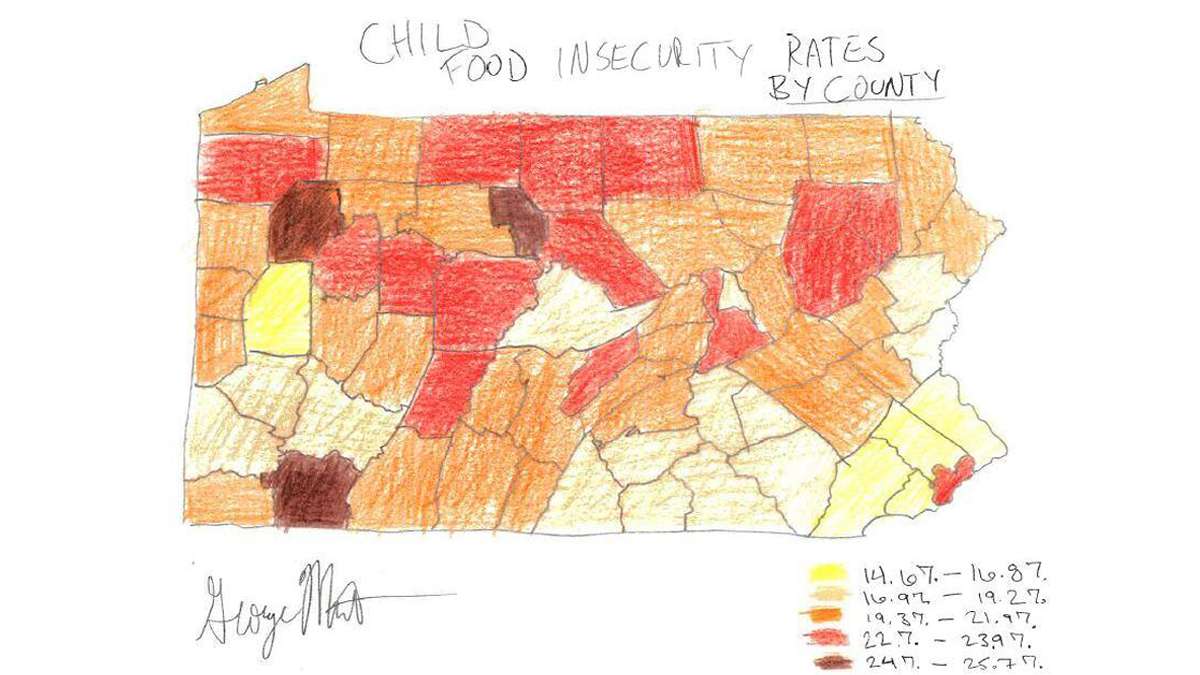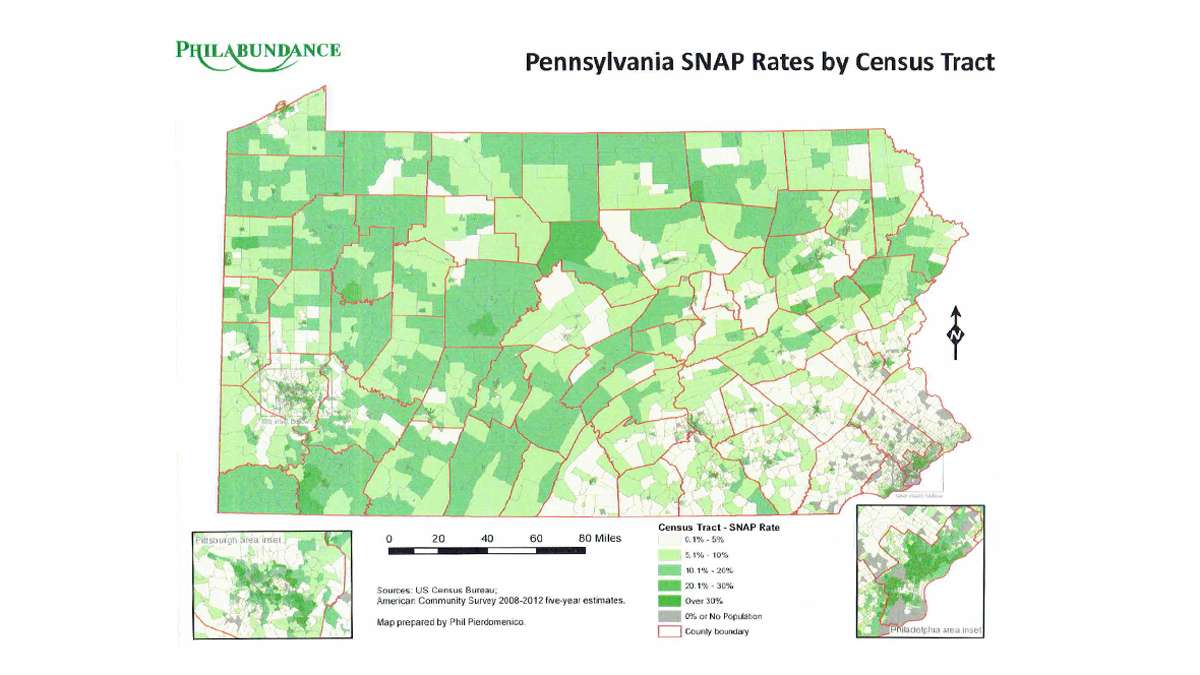Food for thought: 1 in 8 Pennsylvanians struggle to find enough to eat
It’s the time of the year when food is on the mind.
George Matysik was thinking of food—or, to be more specific, the lack of it—when we asked him and others to submit maps depicting “their Pennsylvania” during one of our community forums earlier this year.
Matysik turned in a map showing child food insecurity rates by county, colored in shades of yellow, orange, and red.
Matysik is the Director of Government Affairs and Public Policy for Philabundance, a hunger relief organization based in Philadelphia.
Philabundance also put together a map of SNAP rates by census track. SNAP stands for Supplemental Nutrition Assistance Program, or what people used to refer to as “food stamps.” To be eligible for SNAP benefits in Pennsylvania, a single person must earn a gross income of $1,557 or less a month. For a family of four, the maximum gross income is $3,181.
Perhaps the most dramatic observation from the map is the extreme disparity between inner-city Philadelphia (see map inset) and its surrounding suburbs. The city neighborhoods are largely shaded in dark green (meaning more than 30 percent of residents are SNAP-eligible), while the suburbs are mostly white and light green (meaning just 0.1 percent -5 percent of residents are SNAP-eligible).
In fact, Pennsylvania Department of Human Services numbers show as of 2012, 26 percent of SNAP-eligible individuals in the Commonwealth live in Philadelphia County (and in the county, 30.7 percent of residents receives or is eligible for SNAP).
Poverty and food insecurity aren’t just urban issues, of course. The Philabundance map shows a troubling portion of the entire state–especially rural areas–in shades of green.
A 2013 study put out by Coalition Against Hunger reports nearly 1.6 million Pennsylvanians are considered “food insecure”—that’s 1 in 8 residents.
And participation in the SNAP program has gone up significantly in the last several years. All 67 counties in Pennsylvania saw an increase of residents using SNAP between 2007 and 2012. Cumberland County saw the biggest spike in participation — 147 percent.
WHYY is your source for fact-based, in-depth journalism and information. As a nonprofit organization, we rely on financial support from readers like you. Please give today.




